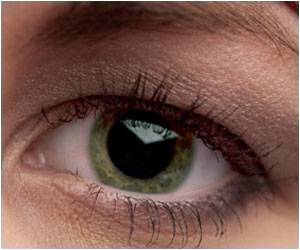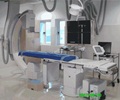Increased expression of the angiogenic factor VEGF-A promotes three common aging-related eye conditions - both versions of age-related macular degeneration and cataracts.

‘Age-related macular degeneration involves a breakdown of the retinal pigment epithelium, a leading cause of vision loss in individuals over age 50.’





While VEGF-A was known to be associated with neovascular or 'wet' AMD, whether it was a direct cause of the condition was unknown. Its role in 'dry' AMD was even less certain, and its contribution to cataract formation was totally unexpected. "Our finding that shared pathologic mechanisms contribute to these three conditions identifies potential molecular targets for treating or even preventing their development," says Alexander Marneros, MD, PhD, of the MGH Cutaneous Biology Research Center, author of the paper published in EMBO Molecular Medicine. "Identifying the downstream mechanisms by which VEGF-A influences the development of these diseases may lead to new therapies that don't have the adverse effects of blocking VEGF-A itself."
A leading cause of vision loss in individuals over age 50, AMD involves a breakdown of the retinal pigment epithelium - the layer of cells at the base of the light-sensitive retina in the eye. The most common type of AMD, dry AMD, leads to thinning of tissues in the macula - the central portion of the retina - and deposition of small deposits under the retina. The less common wet AMD involves an abnormal proliferation of blood vessels beneath the retina, which can leak and damage the light-sensing cells of the retina. Both forms of AMD lead to blurring and potentially loss of the central visual field, but wet AMD usually progresses much more rapidly.
Levels of VEGF-A are known to be elevated within the eyes of individuals with wet AMD, and VEGF-A inhibitors can be prescribed to slow progression of the condition. But long term-treatment becomes less effective and can actually damage the retina, probably by inhibiting beneficial effects of VEGF-A. It was also not known whether elevated VEGF-A directly caused either form of AMD or if it was an effect of other aging pathologies.
Since VEGF-A is known to induce production of these reactive oxygen species, Marneros hypothesized that it may play an essential role in a cycle in which hypoxia and oxidative stress induce VEGF-A expression, which stimulates further oxidative stress, resulting in these pathological conditions.
Advertisement
Since tissue damage produced by oxidative stress involves the activation of inflammatory processes by a protein complex called the NRLP3 inflammasome, Marneros investigated its role in VEGF-A-induced aging pathologies of the eye. His experiments revealed that blood vessel overgrowth in wet AMD is promoted by NRLP3 inflammasome-mediated activation of the inflammatory factor IL-1β and can be prevented by inhibiting specific components of the NRLP3 inflammasome.
Advertisement
"Our results indicate that targeting the components of the NRLP3 inflammasome may be a strategy for both preventing and inhibiting these common diseases of the eye without losing the beneficial effects of VEGF-A," says Marneros, who is an assistant professor of Dermatology at Harvard Medical School. "These findings provide the preclinical framework for future clinical studies that could determine whether therapeutic targeting of the NLRP3 inflammasome or of IL-1β could inhibit the manifestation of age-related cataracts or AMD in patients." The study was supported by National Eye Institute grant R01-EY019297 and by the BrightFocus Foundation.
Source-Eurekalert














